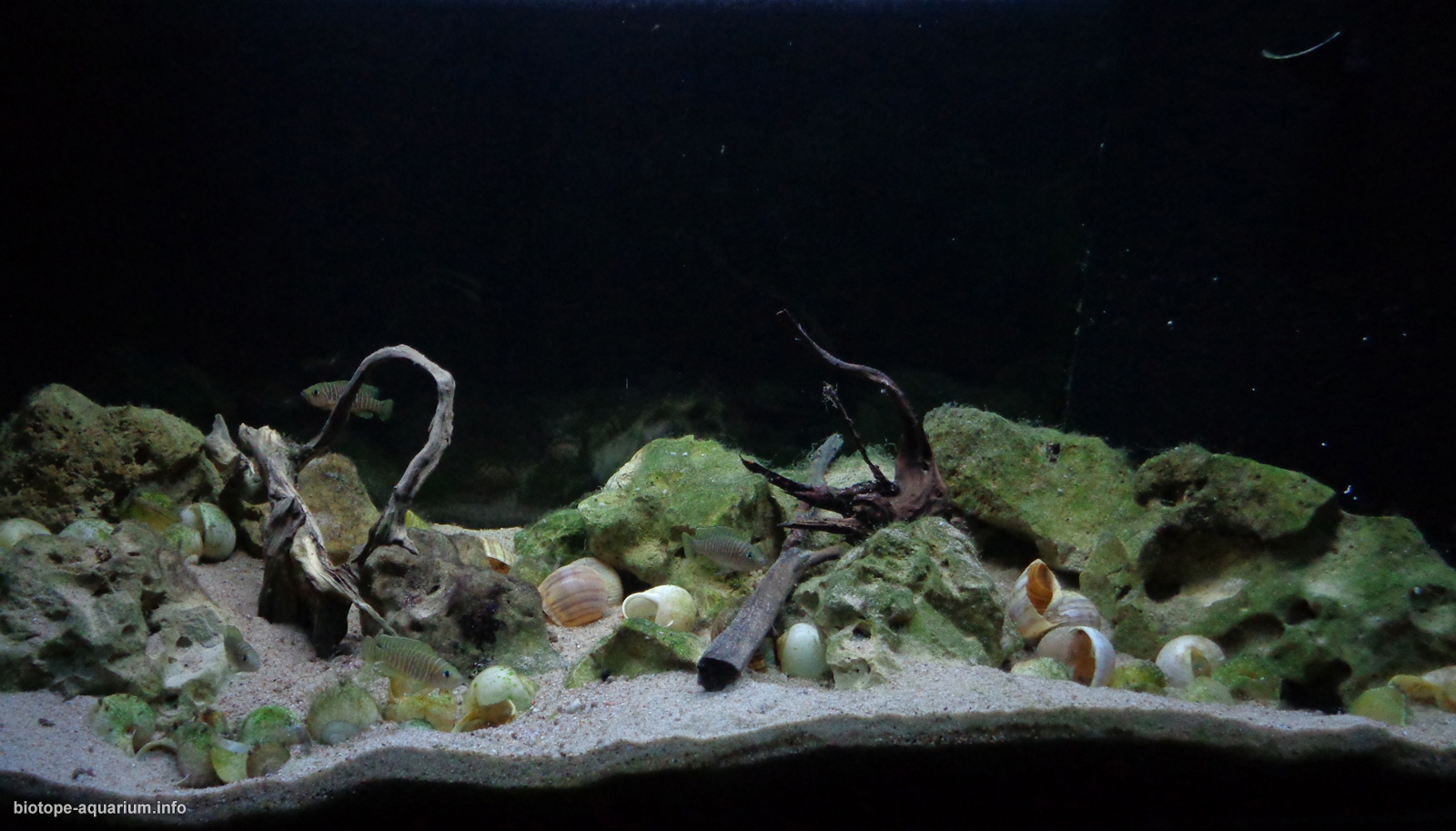Lake Tanganyika, coastal zone
125th place in Biotope Aquarium Design Contest 2018
![]() Belarus. Evgeny Frolenko
Belarus. Evgeny Frolenko

Volume: 100 L
Dimensions: 80x35x35 cm
List of fishes: Neolamprologus similis
List of plants: N/A
Description of decorations: Driftwood, stones and sand were taken from local reservoirs. Algae were specially left to grow on the stones. The sand took approximately the same color as in the underwater videos from Lake Tanganyika.
Description of equipment: One corner of the aquarium is fenced off by a partition for filtering and a heater. There is ceramics, and sponges, the head of the filter AquaEl Power head 500L/H is installed there.
Water parameters: The temperature is 25°C, pH is 7.5.
INFORMATION ABOUT BIOTOPE
Description of the area surrounding the biotope: Lake Tanganyika is located in the deepest tectonic depression of Africa, at an altitude of 773 meters above sea level and is part of the ancient East African rift system. Underwater threshold of the lake is divided into two deep-water pools. The lake enters the basin of the Congo River, one of the largest rivers in the world. The coastal landscapes, as a rule, consists of huge rocks and gently slopes on the eastern side of the bank. On the west coast, the steep side walls of the East African rift zone, forming the coastline, reach 2000 m in height. The coastline is dotted with coves and bays. The largest of them is the Bay of Burton. The average surface temperature is 25°C, the average pH is 8.4.
Description of the underwater landscape of the biotope: In my aquarium, I recreated the biotope of the coastal zone of the lake. In this biotope there is light sand on the bottom. There are stones, snags, plants there.
Description of the parameters of the habitat: The water is clear. The average temperature is 25°C, the average pH is 8.4.
List of fishes and invertebrates occurring in the nature biotope: Lamprologus similis, Lamprologus callipterus, Neolamprologus and Xenotilapia.
List of plants found in the nature biotope: Najas marina spp. armata, Vallisneria spiralis.
Sources of information:
